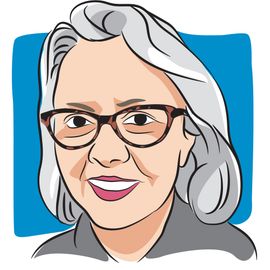- About Us
- Advertise / Support
- Editorial Board
- Contact Us
- CancerNetwork.com
- TargetedOnc.com
- OncLive.com
- OncNursingNews.com
- Terms & Conditions
- Privacy
- Do Not Sell My Information
- Washington My Health My Data
© 2025 MJH Life Sciences™ and CURE - Oncology & Cancer News for Patients & Caregivers. All rights reserved.
Body Positivity After a Mastectomy: An Ongoing Quest

Felicia Mitchell, retired from college teaching, is a poet and writer who makes her home in southwestern Virginia. She is a survivor of stage 2b HER2-positive breast cancer diagnosed in 2010. Website: www.feliciamitchell.net
It took years to understand why my mastectomy site looked different. Knowing I healed correctly for my procedure helped me accept my new normal.
For years, I was curious about the smooth skin some friends have after surgery for breast cancer. I thought something was wrong with my body, specifically that it had not healed correctly after a modified radical mastectomy. What remains looks a little like a deflated breast with scar tissue instead of a nipple. Recently, organizing medical files, I found a notation about a “skin-sparing mastectomy” and looked that up online.
A skin-sparing mastectomy means that the surgeon, after removing the tumor(s) and related tissue, leaves some skin to facilitate reconstruction. Usually, this sort of procedure would be immediate, although I understand that a delayed reconstruction can be possible for women who opt for it many years later. I never wanted reconstruction, though, and was clear about that from the start of the conversations about treatment plans. Who knows how my choice fell through the cracks at the time?
I am okay with that. Still, upon learning that my right chest is primed for receiving an implant, I wondered if I should get one now, despite valid and rational reasons for never wanting to. I prefer to go au naturel, to be myself, which in this case means I am a one-breasted woman comfortable with asymmetry. Why, then, was I contemplating a hypothetical reconstruction just because my body was prepped for it? I guess just because I could. It is normal to imagine an alternate reality.
My current reality is fine. I am, in fact, approaching 70, used to the new normal. In the beginning, while I was working, I did dress to disguise my lopsided chest, with scarves or loose jackets and sweaters. I realized too that the color black is a great choice for camouflage. Eventually, it did not matter what I wore. I now go for complete comfort, except for the rare occasions I wear a prosthetic bra simply because sometimes it is fun to play dress-up and even just to blend in with a crowd.
The beanbag prosthesis, which shape-shifts, has always been more comfortable when I play-act. Now I know why my silicone prosthesis has never settled into my chest, even though it is a nice one (and will never wear out as I have only worn it a few times). I like the beanbag most and may buy another before I am 80 so I can have two bras at the ready (black, white). Finding out that there is a reason for my appearance also has helped me to stop comparing what I look like to what I once almost envied.
I do remain mystified that I ended up with a skin-sparing mastectomy rather than what is called, appropriately, an aesthetic flat closure. Perhaps during the days leading up to surgery I did not do enough research or make myself clear to my surgeon, whom I do not fault. In fact, my surgeon is my hero for going into what was first considered an in situ diagnosis and extricating two invasive tumors, lots of in situ tumors, and lymph nodes laden with cancer cells. She is my hero. My lesson for those considering mastectomies is to ask more questions in discussions leading up to surgery.
The extra tissue that remains now is aging with the rest of me. Sometimes my mastectomy site is uncomfortable. While a plastic surgeon could remedy the situation, I am not inclined to get cut on again unless I have to. I do think, because I wonder why this remaining tissue is not screened except in breast self-exams, I will follow up and ask my doctor at the annual breast check about the care and maintenance of any breast tissue that remains. Otherwise, I now accept what I look like and will stop comparing apples and oranges.
For more news on cancer updates, research and education, don’t forget to subscribe to CURE®’s newsletters here.
Related Content:



